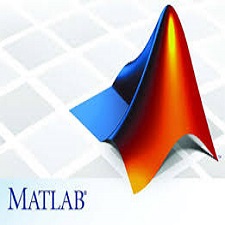توضیحات
ABSTRACT
The miniaturization of mechanical components with complex shapes is a great challenge in emerging applications. Silicon nitride (Si3N4) ceramics are excellent candidates for such applications due to their outstanding mechanical, thermal, and tribological properties. However, they are difficult to machine using normal mechanical machining methods. If the material were electrically conductive, electrical discharge machining (EDM) could be applied to produce precise and complex shapes. In this paper, in order to investigate the effects of electrical conductivity on the EDM characteristics, several carbon nanostructure composite materials are fabricated and EDMed using the assisting electrode method proposed by the current authors. The performance of the process is evaluated as a function of the carbon nanostructure content and type. The former is separately selected to be close to the electrical percolation threshold (0.9 vol.% and 5.3 vol.% for carbon nanotube (CNT) and graphene Nano platelet (GNP) composites, respectively), and well above that limit (5.3 vol.% and 20.6 vol.%), where electrical conductivities on the order of 10 and 100 S·m-1 are attained for CNTs and GNPs-based nanocomposites, respectively. In addition, bare Si3N4 specimens are also tested. Material removal rate, electrode wear ratio, and surface roughness of the machined pieces are analyzed for all testing conditions.
INTRODUCTION
The miniaturization of mechanical components with complex shapes is a great challenge in emerging applications linked to the energy and communications sectors, such as in micro turbines or micro electro mechanical systems (MEMS). Silicon nitride (Si3N4) ceramics are excellent candidates for such applications owing to their outstanding mechanical, thermal, and tribological properties . However, due to the hardness of these ceramics, alternative machining methods to diamond grinding are required for producing complex micro components. One promising technique is electrical discharge machining (EDM), which uses a spark of electricity to blast away the unwanted material in order to create complex shapes . However, EDM commonly requires the use of materials with sufficient electrical conductivity (> 0.3-1 S·m-1) , which limit its use on insulating ceramics such as Si3N4, SiC, and ZrO2. To overcome these difficulties, different approaches have been attempted by many researchers.
چکیده
مینیاتور کردن اجزای مکانیکی با اشکال پیچیده یک چالش بزرگ در برنامه های در حال ظهور است. سرامیک نیترید سیلیکون (Si3N4) به دلیل خواص عالی مکانیکی، حرارتی و تریبولوژیکی آنها بسیار مناسب است. با این وجود، با استفاده از روشهای معمول ماشینکاری مکانیکی، آنها دشوار هستند. اگر مواد به صورت الکتریکی هدایت شوند، ماشینکاری الکتریکی (EDM) میتواند برای تولید اشکال دقیق و پیچیده استفاده شود. در اين مقاله، به منظور بررسي تاثير هدايت الکتريکي بر ويژگي هاي EDM، چندين مواد کامپوزيتي نانوساختار کربن ساخته شده و EDM با استفاده از روش الکترود کمک کننده پيشنهاد شده توسط مولفين کنوني تهيه شده است. عملکرد فرایند به عنوان عملکردی از محتوای و نوع نانوساختار کربن ارزیابی می شود. اولین نمونه به صورت جداگانه انتخاب شده است که به آستانه نفوذ الکتریکی (0.9 و 5.3 درصد حجمی برای نانولولههای کربنی (CNT) و گرافن نانو پلاکت (GNP) به ترتیب نزدیک است) و بسیار بالاتر از این حد (5.3 vol. ٪ و٪ 20.6 حجم٪)، که در آن جوش های الکتریکی به ترتیب به ترتیب 10 و 100 S · m-1 برای نانوکامپوزیت های مبتنی بر CNT و GNP بدست می آیند. علاوه بر این، نمونه های بی سیم Si3N4 نیز آزمایش می شوند. میزان حذف مواد، نسبت سایش الکترود و زبری سطح قطعات ماشینکاری برای تمام شرایط آزمایش مورد بررسی قرار می گیرد.
مقدمه
مینیاتور کردن اجزای مکانیکی با اشکال پیچیده چالش بزرگی در برنامه های در حال ظهور مرتبط با بخش های انرژی و ارتباطات است، مانند توربین های کوچک یا سیستم های میکرو الکترومکانیکی (MEMS). سرامیک سیلیکون نیترید (Si3N4) به علت ویژگی های مکانیکی، حرارتی و قبیله ای برجسته آنها بسیار عالی است. با این حال، با توجه به سختی این سرامیک، روش های ماشینکاری جایگزین برای سنگ زنی الماس برای تولید اجزای کوچک میکرو مورد نیاز است. یکی از روشهای امیدبخشی، ماشینکاری الکتریکی (EDM) است که از جرقه الکتریسیته برای انفجار مواد ناخواسته برای ایجاد اشکال پیچیده استفاده می کند. با این حال، EDM به طور کلی نیاز به استفاده از مواد با هدایت الکتریکی کافی (> 0.3-1 S · m-1)، که استفاده از آن را در سرامیک های عایق مانند Si3N4، SiC و ZrO2 محدود می کند. برای غلبه بر این مشکلات، بسیاری از محققان تلاش های مختلفی را انجام داده اند.
Year: 2013
Publisher : ELSEVIER
By : D.Hanaoka , Y.Fukuzawa , C. Ramirez , P. Miranzo , M.I.Osendi , M. Belmonte
File Information: English Language/ 6 Page / size: 875 KB
Only site members can download free of charge after registering and adding to the cart
سال : 1392
ناشر : ELSEVIER
کاری از : D.Hanaoka، Y.Fukuzawa، C. Ramirez، P. Miranzo، M.I.Osendi، M. Belmonte
اطلاعات فایل : زبان انگلیسی / 6 صفحه / حجم : KB 875


![Electrical discharge machining of ceramiccarbon nanostructure[taliem.ir]](https://taliem.ir/wp-content/uploads/Electrical-discharge-machining-of-ceramiccarbon-nanostructuretaliem.ir_.jpg)



![Corrosion resistance of sintered[taliem.ir]](https://taliem.ir/wp-content/uploads/Corrosion-resistance-of-sinteredtaliem.ir_.jpg)

![Corrosion resistance of sintered[taliem.ir]](https://taliem.ir/wp-content/uploads/Corrosion-resistance-of-sinteredtaliem.ir_-150x150.jpg)
![A fuzzy control system of diesel generator speed[taliem.ir]](https://taliem.ir/wp-content/uploads/A-fuzzy-control-system-of-diesel-generator-speedtaliem.ir_-150x150.jpg)
نقد و بررسیها
هنوز بررسیای ثبت نشده است.